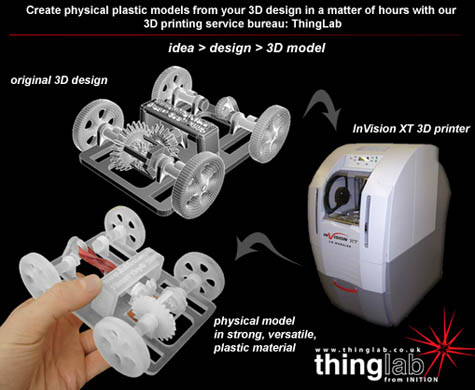BLDGBLOG (4)
By:
August 5, 2010
The Subterranean Machine Dreams of a Paralyzed Youth in Los Angeles
 [Image: A glimpse of Honda’s brain-interface technology, otherwise unrelated to the post below].
[Image: A glimpse of Honda’s brain-interface technology, otherwise unrelated to the post below].
Among many other interesting things in the highly recommended Wired for War: The Robotics Revolution and Conflict in the Twenty-First Century by P.W. Singer — a book of overwhelming interest to historians, psychologists, designers, military planners, insurgents, peace advocates, AI researchers, filmmakers, novelists, future soldiers, legislators, and even theologians — is a very brief comment about military research into the treatment of paralysis.
In a short subsection called “All Jacked Up,” Singer refers to “a young man from South Weymouth, Massachusetts,” who was “paralyzed from the neck down in 2001.” After nearly giving up hope for recovery, “a computer chip was implanted into his head.”
- The goal was to isolate the signals leaving [his] brain whenever he thought about moving his arms or legs, even if the pathways to those limbs were now broken. The hope was that [his] intent to move could be enough; his brain’s signals could be captured and translated into a computer’s software code.
None of this seemed like news to me; in fact, even the next step wasn’t particularly surprising: they hooked him up to a computer mouse and then to a TV remote control, and the wounded man was thus able not only to surf the web but to watch HBO.
What I literally can’t stop thinking about, though, was where this research “opens up some wild new possibilities for war,” as Singer writes.
In other words, the Air Force asked, why hook this guy up to a remote control television when you could hook him up to a fully-armed drone aircraft flying above Afghanistan? He would simply pilot the plane with his thoughts.
 [Image: A squadron of drones awaits its orders].
[Image: A squadron of drones awaits its orders].
This vision — of paralyzed soldiers thinking unmanned planes through war — is both terrible and stunning.
Singer goes on to describe DARPA’s “Brain-Interface Project,” which helped pay for this research, in which training the paralyzed to control machines by thought could be put to use for military purposes.
Later, Singer describes research into advanced, often robotic prostheses; “these devices are also being wired directly into the patient’s nerves,” he writes.
- This allows the solder to control their artificial limbs via thought as well as have signals wired back into their peripheral nervous system. Their limbs might be robotic, but they can “feel” a temperature change or vibration.
When this is put into the context of the rest of Singer’s book — where we read, for instance, that “at least 45 percent of [the U.S. Air Force’s] future large bomber fleet [will be] able to operate without humans aboard,” with other “long-endurance” military drones soon “able to stay aloft for as long as five years,” and if you consider that, as Singer writes, the Los Angeles Police Department “is already planning to use drones that would circle over certain high-crime neighborhoods, recording all that happens” — you get into some very heady terrain, indeed. After all, the idea that those drone aircraft circling over Los Angeles in the year 2013 are actually someone’s else literal daydream simply blows me away.
In other words, if you can directly link the brain of a paralyzed soldier to a computer mouse — and then to a drone aircraft, and then perhaps to an entire fleet of armed drones circling over enemy territory — then surely you could also hook that brain up to, say, lawnmowers, remote-controlled tunneling machines, lunar landing modules, strip-mining equipment, and even 3D printers.
And here’s where some incredible landscape design possibilities come in.
 [Image: 3D printing, via Thinglab].
[Image: 3D printing, via Thinglab].
A patient somewhere in Gloucestershire dreams in plastic objects endlessly extruded from a 3D printer… Architectural models, machine parts, abstract sculpture — a whole new species of object is emitted, as if printing dreams in three-dimensions.
Or you go to a toy store in Manhattan — or to next year’s Design Indaba, or to the Salone del Mobile — and you find nothing but rooms full of strange objects dreamed into existence by paralyzed 16-year olds.
The idea of brain-controlled wireless digging machines, in particular, just astonishes me; at night you dream of tunnels — because you are actually in control of tunneling equipment operating somewhere beneath the surface of the earth.
A South African platinum mine begins to diverge wildly from real sites of mineral wealth, its excavations more and more abstract as time goes on — carving M.C. Escher-like knots and strange cursive whorls through ancient reefwork below ground — and it’s because the mining engineer, paralyzed in a car crash ten years ago and in control of the digging machines ever since, has become addicted to morphine.
Or perhaps this could even be used as a new and extremely avant-garde form of psychotherapy.
For instance, a billionaire in Los Angeles hooks his depressed teenage son up to Herrenknecht tunneling equipment which has been shipped, at fantastic expense, down to Antarctica. An unmappably complex labyrinth of subterranean voids is soon created; the boy literally acts out through tunnels. If rock is his paint, he is its Basquiat.
Instead of performing more traditional forms of Freudian analysis by interviewing the boy in person, a team of highly specialized dream researchers is instead sent down into those artificial caverns, wearing North Face jackets and thick gloves, where they deduce human psychology from moments of curvature and angle of descent.
My dreams were a series of tunnels through Antarctica, the boy’s future headstone reads.
 [Image: Three varieties of underground mining machine].
[Image: Three varieties of underground mining machine].
That, or we stay aboveground and we look at the design implications of brain-interfaced gardening equipment.
I’m imagining a new film directed by Alex Trevi, in which a landscape critic on commission from The New Yorker visits a sprawling estate house somewhere in southern France. The owner has been bed-bound for three decades, following a near-fatal car accident, but his brain was recently interfaced directly with an armada of wireless gardening machines: constantly trimming, mowing, replanting, and pruning, the gardens outside are shifted with his every thought process.
Having arrived simply to write a thesis about this unique development in landscape design, our critic finds herself entranced by the hallucinatory goings-on, the creeping vines and insectile machines and moving walls of hedges all around her.
 [Image: The gardens at Versailles, via Wikipedia].
[Image: The gardens at Versailles, via Wikipedia].
Returning to Singer, briefly, he writes that “Many robots are actually just vehicles that have been converted into unmanned systems” — so if we can robotize aircraft, digging machines, riding lawnmowers, and even heavy construction equipment, and if we can also directly interface the human brain to the controls of these now wireless robotic mechanisms, then the design possibilities seem limitless, surreal, and well worth exploring (albeit somewhat cautiously) in real life.
It could be a new episode of MythBusters, or the next iteration of the DARPA Grand Challenge. What’s the challenge?
A paralyzed teenager has to dig a tunnel through the Alps using only his or her brain and a partial face excavation machine.
We’ve described Geoff Manaugh’s BLDGBLOG “our favorite history/urban exploration/science fiction/design/climate change/city planning blog.” So we’re delighted to present a curated series of 10 BLDGBLOG posts. This is the series’ fourth installment.
